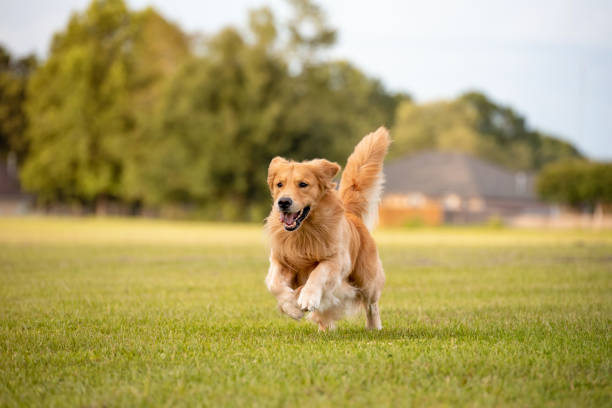
Tips for a Healthy Dog
Keeping your dog healthy isn’t just about occasional vet visits or buying fancy toys. It’s a daily commitment, a lifestyle that you shape with every meal, walk, and play session. Think of your dog’s health like tending a garden, the more consistently you water, weed, and nourish, the better your blooms will be. In this article, you’ll discover actionable tips for feeding, exercising, grooming, and caring for your dog to ensure they live a long, joyful life. Ready to become your dog’s best health coach? Let’s dive in.
Tips for a Healthy Dog
Feed a Balanced, High-Quality Diet
Choose Food Formulated for Your Dog’s Age and Breed
Avoid Table Scraps and Overfeeding
Consider Supplements Only If Recommended by Your Vet
Tailor Activity to Breed and Age
Include Physical and Mental Stimulation
Watch for Signs of Overexertion or Injury
Stay on Top of Preventive Vet Care
Schedule Annual Exams and Vaccinations
Keep Up with Parasite Prevention
Monitor for Subtle Signs of Illness
Brush Your Dog’s Teeth Regularly
Schedule Professional Cleanings When Needed
Use Dental Chews or Toys for Daily Support
Use a Body Condition Score (BCS) Instead of Just the Scale
Feed a Balanced, High-Quality Diet
Choose Food Formulated for Your Dog’s Age and Breed
Nutrition forms the foundation of your dog’s health. Just as a growing puppy’s needs differ from those of a calm senior, their food should match their stage of life. Puppies require extra protein and calories to support rapid growth, while seniors benefit from diets lower in fat but rich in joint-supporting nutrients like glucosamine. Breed size matters, too. Large breeds like Great Danes need special formulas to promote bone health and prevent joint issues, while small breeds like Chihuahuas require calorie-dense foods that meet their fast metabolisms.
Avoid Table Scraps and Overfeeding
You know that pleading look your dog gives when you’re eating dinner? Giving in to those puppy eyes can harm their health. Human food often contains spices, fats, and ingredients toxic to dogs, such as onions or chocolate. More importantly, it leads to weight gain. Obesity isn’t just an aesthetic problem; it contributes to diabetes, arthritis, and shortens your dog’s lifespan. Instead, stick to portion-controlled meals based on your dog’s weight and activity level. If you need a benchmark, your veterinarian can help calculate an ideal daily calorie intake tailored to your dog.
Consider Supplements Only If Recommended by Your Vet
You might have heard about fish oil or probiotics improving your dog’s health. While these supplements have benefits, they’re not magic pills. Over-supplementing can cause imbalances or even harm. Always talk with your vet before adding supplements. For example, omega-3 fatty acids support coat and joint health, while probiotics may ease digestion. But dosage and necessity vary by dog. Use supplements as part of a comprehensive health plan, not a substitute for good nutrition.
Exercise Your Dog Daily
Tailor Activity to Breed and Age
Exercise is more than burning energy — it builds muscle, strengthens the heart, and keeps joints limber. But every dog’s needs differ. Border Collies or Huskies thrive on intense, daily workouts. In contrast, older dogs or breeds like Bulldogs with shorter snouts may only manage gentle strolls. Pay close attention to your dog’s tolerance. Pushing them too hard risks injury; too little exercise invites boredom and weight gain.
Include Physical and Mental Stimulation
Dogs are as much brains as brawn. Playing fetch or tug satisfies physical urges, but mental challenges like puzzle toys, scent work, or training sessions keep their minds sharp. Think of it as cross-training for your dog’s body and brain. These activities reduce anxiety and destructive behaviors caused by boredom. If you haven’t tried puzzle feeders yet, you’re missing out on a simple way to boost your dog’s happiness and health.
Watch for Signs of Overexertion or Injury
How do you know if you’re overdoing it? Watch for limping, excessive panting, or refusal to move. Dogs don’t complain like humans, so subtle signs matter. If your dog seems tired or sore, scale back and give them time to recover. Regular check-ins during walks or play sessions help you spot trouble early.
Stay on Top of Preventive Vet Care

Schedule Annual Exams and Vaccinations
Annual vet visits are your dog’s health checkpoints. During these visits, your vet evaluates weight, skin, teeth, and overall wellness. Vaccinations protect your dog from diseases like distemper, rabies, and parvovirus. Depending on where you live, your dog may need protection against Lyme disease or kennel cough. Staying current prevents serious illness and outbreaks.
Keep Up with Parasite Prevention
Parasites aren’t just a nuisance; they can threaten your dog’s health seriously. Fleas cause itching and can trigger allergic reactions. Ticks carry Lyme disease and ehrlichiosis, which lead to joint pain and fatigue. Heartworms, transmitted by mosquitoes, can be fatal if untreated. Monthly prevention with vet-recommended medications keeps your dog safe year-round. In some regions, parasite risk spikes seasonally — talk to your vet about the best plan.
Monitor for Subtle Signs of Illness
Your dog can’t tell you when something feels off, but changes in behavior provide clues. Look for lethargy, loss of appetite, weight changes, or unusual thirst. Skin issues like excessive scratching, redness, or hair loss also signal health concerns. Early detection leads to easier treatment. Keep a journal if you notice changes — it helps your vet track progress and diagnose problems.
Prioritize Dental Health
Brush Your Dog’s Teeth Regularly
Dental health is often overlooked but plays a huge role in your dog’s overall wellness. Brushing teeth prevents plaque buildup, bad breath, and gum disease that can lead to heart or kidney problems. Use a toothbrush and toothpaste designed for dogs—never human toothpaste, which contains fluoride toxic to dogs. Aim for brushing at least a few times a week.
Schedule Professional Cleanings When Needed
Even with regular brushing, your dog will benefit from professional dental cleanings. These cleanings occur under anesthesia, allowing vets to remove tartar below the gumline and check for oral disease. Signs your dog needs a cleaning include persistent bad breath, drooling, or difficulty eating. Delaying treatment risks tooth loss and systemic infections.
Use Dental Chews or Toys for Daily Support
Dental chews approved by the Veterinary Oral Health Council (VOHC) can supplement brushing. They mechanically reduce plaque and encourage chewing, which strengthens jaws. Avoid hard bones, antlers, or hooves that can crack teeth. Choose safe, vet-recommended products to protect your dog’s smile.
Maintain a Healthy Weight
Use a Body Condition Score (BCS) Instead of Just the Scale
Weight alone isn’t the whole picture. A lean dog with strong muscles and a visible waistline is healthier than an overweight dog with excess fat. Use a Body Condition Score, a visual and tactile guide vets use, to assess your dog’s shape. You should be able to feel ribs without excess fat covering and see a defined waist when viewed from above. Obesity raises risks for diabetes, arthritis, and shortens lifespan.
Track Progress with Monthly Weigh-Ins
Weight gain sneaks up. You might not notice a few extra pounds until they become a big problem. Weigh your dog monthly or ask your vet to help. Adjust food and activity accordingly. Tracking progress builds accountability and helps you catch issues early.
Build Healthy Habits Together
Your dog’s health is a partnership. Every meal, walk, grooming session, and vet visit you manage shapes their quality of life. Start with one small change, maybe regular teeth brushing or adding a daily puzzle toy, and build from there. Remember, your veterinarian is your ally. Together, you’ll keep your dog thriving, tail wagging, and spirit bright.

